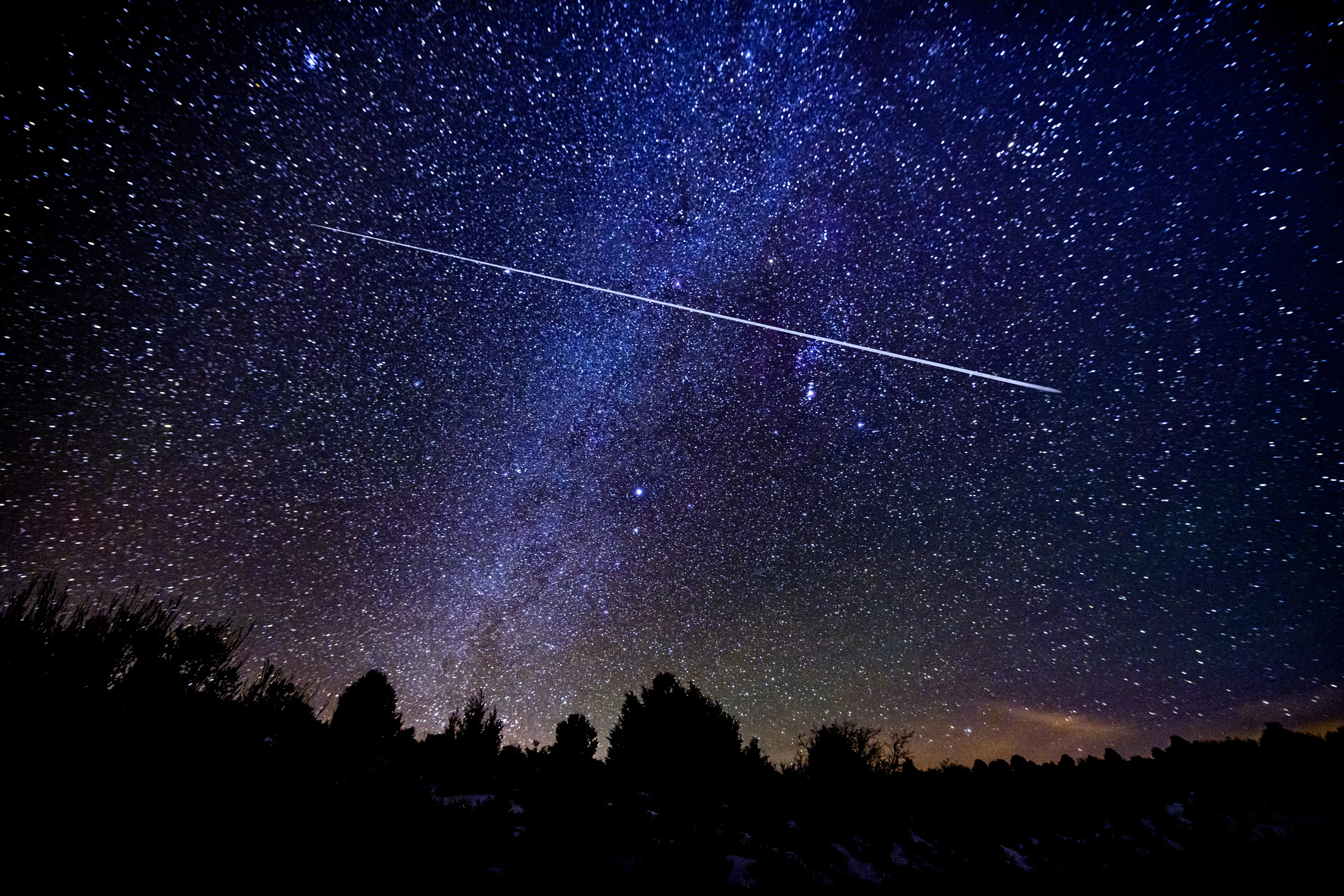2 min read
Northern Taurid meteor shower could produce fireballs. Here’s how to watch
 Merit Street Media
|
Nov 11, 2024
Merit Street Media
|
Nov 11, 2024

Earth — If you missed the chance to see fireballs of the Southern Taurids light up the sky last week, don’t worry. The second branch of the Taurid meteor showers, the Northern Taurid event, is about to take center stage.
The Northern Taurids have been active since mid-October, but the shower will peak Monday night into Tuesday — with optimal visibility likely occurring after midnight — offering patient sky-gazers the best opportunity to view meteor activity, according to NASA.
The Northern Taurids — which appear to radiate from the Taurus constellation — are visible almost anywhere in the world, except Antarctica, said Dr. Shannon Schmoll, director of Abrams Planetarium at Michigan State University.
However, the moon will be about 79% full when the Northern Taurids peak this week, according to the American Meteor Society, which could make spotting meteors earlier in the evening more challenging.
For the best viewing experience, Schmoll suggests waiting until later at night when the moon is closer to setting, allowing for clearer skies and better visibility. “Don’t move around too much but get away from the lights, get comfortable and be patient,” Schmoll said.
The optimal time for a meteor sighting may vary depending on the area, so entering your approximate location into The Old Farmer’s Almanac moonrise and moonset calculator will help determine the best time to enjoy this cosmic phenomenon.
When to look up in November ✨
— NASA (@NASA) November 1, 2024
Look out for Jupiter, Saturn, and Mars in the night sky throughout the month. If you live in the eastern half of the U.S. or Canada, you might be able to see a stellar lunar event—an occultation—when the Moon hides a bright star! pic.twitter.com/NAQm7E3HS1
Reasons to watch
Like their southern counterparts, the Northern Taurids originate from Comet Encke, which has the shortest orbit of any known comet in the solar system — taking just 3.3 years to complete a full trip around the sun.
Although the Northern Taurid event produces fewer meteors than other major showers — only about five per hour — it still offers something special: the chance to see increased fireball activity.
Unlike most meteors, which are typically between 10 microns (0.0004 inch) and around 1 meter (3.3 feet) in size, according to NASA, fireballs are larger, giving them a brighter appearance. In fact, fireballs often appear so bright that they even outshine Venus in the night sky.
In addition to their brightness, fireballs can be visible for longer periods, leaving behind two distinct types of trails: trains and smoke trails. A train, as defined by the American Meteor Society, is a shining trail of ionized and excited air molecules left behind after the meteor passes, typically lasting a few seconds but on rare occasions enduring for several minutes.
Smoke trails, which are most often visible during daylight hours, resemble the contrails left by airplanes and can appear light or dark.
Regardless of whether you’re lucky enough to see fireballs flying through the night sky, Schmoll recommends taking some time to enjoy the beauty of the universe by observing the meteor shower. “Something that is really good for us is to be able to have that connection to nature,” Schmoll said. “There’s still something so exciting about seeing that … interaction of the Earth with the rest of the solar system, and it being this beautiful sight.”
More than just awe-inspiring spectacles, meteor showers provide new information about the universe for astronomers and amateur space lovers alike. “If there are any larger pieces of (meteorites) that land with this now new material about the solar system (they can help us) study and put together all of those pieces about the formation and origin of our solar system,” Schmoll said.
The Northern Taurids are visible until December 2, according to the American Meteor Society, so there is potential to spot more fireballs over the next few weeks.
Upcoming celestial events
There are still a few more opportunities to see celestial activity before the end of 2024. Here are peak dates for upcoming meteor showers, according to the American Meteor Society:
Leonids: November 16-17
Geminids: December 12-13
Ursids: December 21-22
Two full moons also remain — the beaver moon, which is a supermoon, on November 15 and the cold moon on December 15, according to the Farmers’ Almanac.
Copyright CNN

